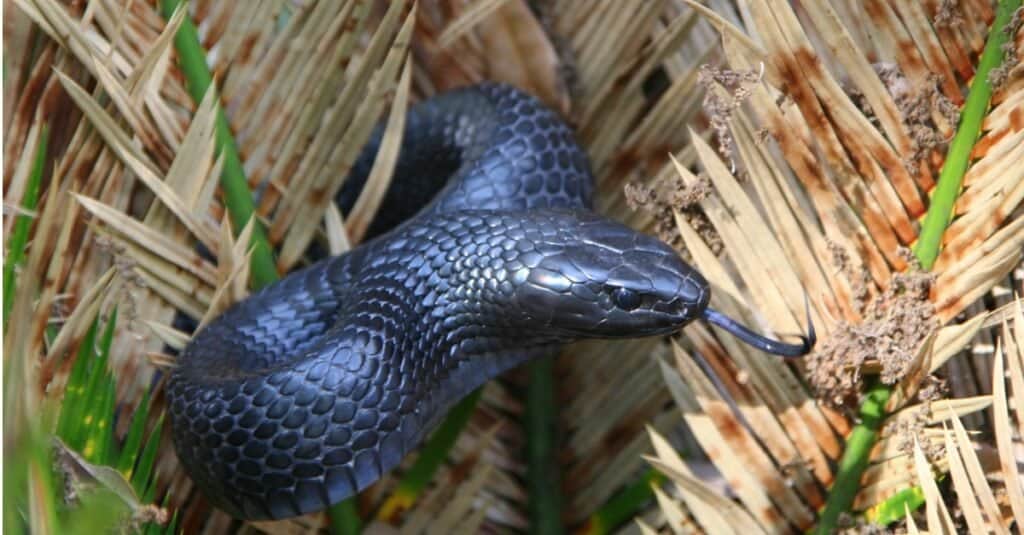Introduction

When it involves the fascinating world of serpents, couple of species capture the imagination rather like the baby tiger serpent. Recognized for their distinct coloration and powerful poison, these snakes are an essential part of Australia's distinct ecosystem. In this comprehensive post, we will certainly look into different elements of infant tiger serpents, including their behavior, habitat, and exactly how to safely connect with them. Whether you're a wildlife fanatic or merely curious about these creatures, understanding infant tiger serpents can help foster a much deeper recognition for Australian snake facts nature.
Baby Tiger Snakes: What You Need to Learn About Their Habits and Habitat
What Are Child Tiger Snakes?
Baby tiger snakes are adolescent types of the very poisonous varieties recognized clinically as Notechis scutatus These snakes are mostly found in seaside regions of Australia, particularly in Tasmania and southern Victoria. As they grow, their coloration changes from an extra muted palette to the characteristic yellow and black bands that give them their name.

One noteworthy facet of baby tiger serpents is their size; hatchlings usually gauge around 25-30 centimeters in size. Regardless of their little stature, they possess a surprising quantity of venom that can be damaging to humans if bitten.

Physical Characteristics
Tiger serpents have a number of vital physical characteristics:
- Coloration: The distinctive banding pattern frequently ends up being much more noticable as they mature. Size: Grownups can reach lengths of approximately 2 meters. Body Shape: They have a durable body that aids in swimming and earthbound movement.
Where Do Infant Tiger Snakes Live? Comprehending Their Habitat
Understanding the environment preferences of child tiger snakes is necessary for both conservation initiatives and public safety and security. These snakes grow in different environments:
- Wetlands: Marshes and swamps give sufficient searching grounds. Coastal Regions: Frequently discovered near beaches where they can search for prey. Woodlands: Dense vegetation uses cover from predators.
Geographical Distribution
Tiger serpents are primarily discovered along Australia's southerly coastline, consisting of:
- Tasmania: Home to among one of the most infamous populations. Victoria: Particularly in areas near water bodies.
Are Tiger Snakes Venomous? A Deep Dive into Their Venom
One usual inquiry occurs when talking about infant tiger serpents: "Are tiger serpents poisonous?" The solution is an unquestionable yes!
Venom Composition
The venom of tiger snakes contains neurotoxins that can cause paralysis, coagulopathy (blood clot problems), and possibly death if without treatment. Right here's what you require to recognize:
- Effects on Humans: A bite from a tiger serpent can result in signs like swelling, discomfort at the bite website, queasiness, and also respiratory failure.
Comparison with Other Poisonous Snakes
In contrast to various other Australian snakes such as the eastern brown snake or king brown snake, tiger serpent venom is considered amongst one of the most powerful. Nonetheless, deaths are unusual due to better clinical therapies and accessibility to antivenom.
Behavioral Patterns of Child Tiger Snakes
Understanding how child tiger snakes behave is critical for those that stay in or go to areas where these reptiles are prevalent.
Nocturnal Habits
Most baby tiger serpents show nocturnal behavior. They have a tendency to forage for food during cooler night temperatures. This adaptability aids them stay clear of predators while improving their searching efficiency.
Hunting Techniques
Their searching strategies include:
- Ambush Predation: Waiting inactive till prey comes close. Active Foraging: Proactively relocating with vegetation or along rivers looking for food.
First Help for Snake Bites: What You Ought to Know
Despite being remarkable animals, encounters with infant tiger serpents can result in harmful circumstances if attacks happen. Understanding first aid treatments can conserve lives.
Immediate Steps After a Bite
Remain calm; panic boosts heart rate. Immobilize the impacted arm or leg making use of a splint or bandage. Seek immediate medical focus-- antivenom might be necessary.Creating a Snake Bite Emergency Treatment Kit
A well-prepared emergency treatment package must include:
|Thing|Purpose|| ------------------------------|--------------------------------------|| Compression plaster|To incapacitate the first aid for snake bite Australia arm or leg|| Splint|Maintains broken bones or joints|| Antihistamines|Relieves allergies|| Emergency contact numbers|Quick accessibility during emergency situations|
Common Myths Regarding Tiger Snakes Debunked
Many myths border these interesting reptiles; let's clarify some false impressions typically held by people.
Myth # 1: All Tiger Snakes Are Aggressive
While some people might show defensive habits when endangered, not all tiger snakes display screen aggression towards humans unless provoked.
Myth # 2: Child Tiger Snakes Are Less Dangerous Than Adults
This myth might not be better from the truth! Child tiger snakes have almost as much venom as adults relative to their dimension; thus they posture considerable threats if bitten.
FAQs Concerning Child Tiger Snakes
What do child tiger snakes eat?- They mostly take in tiny animals, birds, frogs, and fish.
- Look for slender bodies with faint banding patterns that come to be much more pronounced as they mature.
- Yes! Birds of victim and bigger reptiles might target them.
- Typically every few weeks as they proliferate during their very early life stages.
- While some people do maintain them unlawfully without authorizations because of their harmful nature; it's typically not advised offered their poisonous status.
- With punctual clinical treatment-- consisting of antivenom-- the survival price is high!
Conclusion
In recap, comprehending child tiger snakes-- what they eat, where they live, how they behave-- can equip us with important understanding concerning these amazing yet harmful creatures. The significance of education surrounding first aid actions can not be overstated; understanding how to respond effectively after a bite might save lives while cultivating respect for our wriggling next-door neighbors within Australia's death adder australia abundant biodiversity range.
By valuing these serpents' roles within communities-- and identifying prospective hazards-- we promote conjunction rather than fear-based reactions toward each other's existence in nature's grand tapestry! Whether you're a passionate walker considering your following journey or just curious concerning neighborhood wildlife experiences near home-- this overview serves as your trusted referral factor on the enigmatic globe lived in by our friends-- the splendid baby tiger snake!